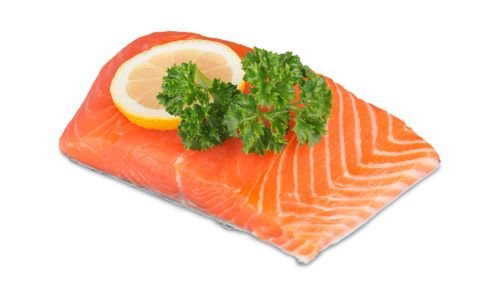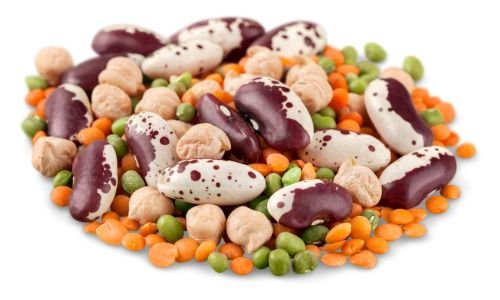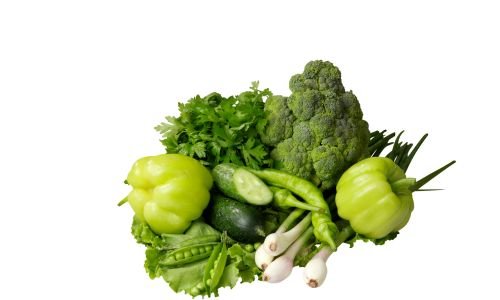Top 7 Superfoods for Weight Management: Nutritional Powerhouses for a Healthier You

Incorporating nutrient-dense foods into your diet is a strategic approach to achieving effective weight management and overall health. Each of the following superfoods offers unique benefits that support weight loss, enhance satiety, and provide essential nutrients. By understanding how these foods contribute to your well-being, you can make informed choices that align with your health goals.
List of nutrient-dense foods for Weight loss
Explore a curated list of nutrient-dense foods that support weight loss. Discover how incorporating these high-protein, fiber-rich, and low-calorie options into your diet can enhance satiety, boost metabolism, and help you achieve your weight management goals.
Salmon: Protein and Omega-3 Rich

Nutritional Profile:
- High in Protein: Salmon is an excellent source of high-quality protein, which is essential for muscle repair and growth.
- High in Omega-3 Fatty Acids: It is also rich in omega-3 fatty acids, which are beneficial fats important for overall health.
Mechanism for Weight Loss:
- Protein:
- Supports Muscle Maintenance: Consuming adequate protein helps maintain muscle mass, which is crucial during weight loss as muscle tissue burns more calories than fat tissue, even at rest.
- Increases Metabolic Rate: Protein consumption can increase your metabolic rate because the body uses more energy to digest protein compared to fats or carbohydrates.
- Omega-3 Fatty Acids:
- Reduces Appetite: Omega-3s can help reduce appetite by increasing feelings of fullness, which may lead to reduced calorie intake.
- Reduces Inflammation: Chronic inflammation can be associated with obesity and metabolic issues. Omega-3s have anti-inflammatory properties that can help manage inflammation.
Research Insights:
- Studies have shown that both protein and omega-3 fatty acids play significant roles in weight management.
- Research supports that omega-3 fatty acids, found in salmon, can aid in reducing appetite and inflammation, contributing to weight loss efforts.
How to Incorporate:
- Recipes and Cooking Methods:
- You can include salmon in your diet through various recipes such as grilled salmon, baked salmon, salmon salads, and salmon sushi.
- Experiment with different cooking methods like baking, grilling, steaming, or poaching to keep meals interesting and flavorful.
Nuts: Energy-Dense and Filling

Nutritional Profile:
- Rich in Healthy Fats: Nuts contain monounsaturated and polyunsaturated fats that are heart-healthy.
- Protein: They provide a good amount of protein, which is important for muscle maintenance.
- Fiber: Nuts are high in fiber, which aids digestion and helps you feel full.
Mechanism for Weight Loss:
- Satiety:
- Maintaining Fullness: The combination of healthy fats, protein, and fiber in nuts helps keep you feeling full longer, which can help control hunger and prevent overeating.
Research Insights:
- Studies have shown that nuts can be beneficial for weight management due to their ability to promote satiety and reduce overall calorie intake.
- Research indicates that including nuts in your diet can aid in weight control by helping manage hunger and providing essential nutrients.
How to Incorporate:
- As Snacks: Eat a small handful of nuts as a healthy, satisfying snack between meals.
- In Salads: Add nuts to salads for a crunchy texture and additional nutrients.
- As Toppings: Sprinkle nuts over yogurt, oatmeal, or smoothie bowls for added flavor and nutrition.
Yogurt: Probiotic and Protein-Packed

Nutritional Profile:
- High in Protein: Yogurt is a great source of protein, which supports muscle maintenance and repair.
- Probiotics: It contains beneficial bacteria that promote a healthy gut microbiome.
Mechanism for Weight Loss:
- Protein and Probiotics:
- Protein: Helps maintain muscle mass, which can aid in increasing metabolism and supporting weight loss.
- Probiotics: Contribute to gut health, which can influence weight management and overall health by improving digestion and nutrient absorption.
Research Insights:
- Studies have explored the role of probiotics in managing weight and how a healthy gut microbiome can influence body weight.
- Research supports the benefits of protein and probiotics in weight management, highlighting yogurt as a valuable addition to a weight loss diet.
How to Incorporate:
- Smoothies: Blend yogurt into smoothies for a protein boost and creamy texture.
- As a Snack: Enjoy yogurt on its own or with some fresh fruit for a nutritious snack.
- With Meals: Use yogurt as a base for sauces or dressings, or add it to your meals as a healthy accompaniment.
Raw Banana: Energy and Nutrient-Rich

Nutritional Profile:
- High in Fiber: Raw bananas are rich in resistant starch, a type of fiber that aids digestion and promotes feelings of fullness.
- Vitamins and Minerals: They provide essential nutrients like Vitamin C, Vitamin B6, and potassium.
Mechanism for Weight Loss:
- Fiber Content: The resistant starch in raw bananas helps control appetite and reduce calorie intake by keeping you full longer.
- Digestive Health: Aids in healthy digestion and may support metabolic health.
Research Insights:
- Fiber and Appetite Control: Research indicates that the resistant starch in raw bananas helps regulate appetite and can reduce calorie intake by promoting a feeling of fullness. [Source: Nutrition Research Reviews]
- Digestive Health: Studies have found that the fiber in raw bananas supports healthy digestion and metabolic health, which can assist in weight management. [Source: Journal of the American College of Nutrition]
How to Incorporate:
- As Snacks: Eat raw bananas on their own for a quick, nutritious snack.
- In Smoothies: Blend raw bananas into smoothies for added fiber and natural sweetness.
- In Salads: Add sliced raw bananas to salads for a unique texture and flavor.
Eggs: Protein-Packed and Versatile

Nutritional Profile:
- High in Protein: Eggs are an excellent source of high-quality protein, which supports muscle maintenance and repair.
- Essential Nutrients: Rich in vitamins like B12, Vitamin D, and choline.
Mechanism for Weight Loss:
- Protein: Helps increase feelings of fullness and boosts metabolic rate, aiding in weight management.
- Satiety: Eggs can reduce overall calorie intake by keeping you satisfied for longer periods.
Research Insights:
- Protein and Metabolism: Research shows that eggs, as a high-protein food, help increase metabolic rate and support muscle maintenance, which is beneficial for weight management. [Source: Journal of the International Society of Sports Nutrition]
- Satiety and Caloric Intake: Studies demonstrate that consuming eggs can enhance satiety and reduce overall calorie intake, aiding in weight control. [Source: Appetite Journal]
How to Incorporate:
- As Breakfast: Enjoy eggs in various forms, such as scrambled, boiled, or poached.
- In Meals: Use eggs in salads, stir-fries, or as a protein addition to many dishes.
Green Vegetables: Nutrient-Dense and Low-Calorie

Nutritional Profile:
- High in Fiber: Green vegetables are packed with dietary fiber.
- Vitamins and Minerals: Provide essential nutrients such as Vitamins A, C, K, and folate.
Mechanism for Weight Loss:
- Low-Calorie: Green vegetables are low in calories but high in volume, helping you feel full without consuming many calories.
- Fiber Content: The fiber aids in digestion and promotes satiety.
Research Insights:
- Low-Calorie Satiety: Research supports that green vegetables, with their low-calorie and high-fiber content, contribute to satiety and help control calorie intake. [Source: Nutrients Journal]
- Health Benefits and Weight Management: Studies have shown that green vegetables are associated with improved health outcomes and can play a role in effective weight management. [Source: American Journal of Preventive Medicine]
How to Incorporate:
- In Salads: Add a variety of green vegetables to salads.
- As Sides: Include steamed or sautéed green vegetables with main dishes.
- In Smoothies: Blend greens into smoothies for added nutrients.
Lean Meat: High-Protein and Filling

Nutritional Profile:
- High in Protein: Lean meats such as chicken breast and turkey are excellent sources of protein.
- Low in Fat: They are lower in fat compared to other meats, making them suitable for weight management.
Mechanism for Weight Loss:
- Protein: Supports muscle maintenance and increases metabolic rate, contributing to weight loss.
- Satiety: Helps keep you full and satisfied, reducing the urge to snack on high-calorie foods.
Research Insights:
- Protein and Metabolic Rate: Studies indicate that lean meats, rich in protein, help increase metabolic rate and support muscle maintenance, which is beneficial for weight management. [Source: Journal of the Academy of Nutrition and Dietetics]
- Satiety and Calorie Reduction: Research shows that including lean meats in the diet can help maintain fullness and reduce calorie intake. [Source: Nutrition & Metabolism Journal]
How to Incorporate:
- In Meals: Use lean meats in a variety of recipes, from grilled chicken to turkey stir-fries.
- As Main Dishes: Incorporate lean meat as the centerpiece of your meals.
Avocado: Healthy Fats and Nutrients

Nutritional Profile:
- Healthy Fats: Avocados are rich in monounsaturated fats, which are beneficial for heart health.
- Vitamins and Minerals: Provide vitamins E, K, and potassium.
Mechanism for Weight Loss:
- Satiety: The healthy fats in avocados help increase feelings of fullness, which can aid in controlling appetite and reducing overall calorie intake.
- Nutrient Density: Offers essential nutrients while being relatively low in calories.
Research Insights:
- Satiety and Appetite Control: Studies have found that the healthy fats in avocados contribute to increased feelings of fullness, which can help control appetite and reduce calorie intake. [Source: Nutrition Journal]
- Nutrient Density and Weight Management: Research supports that avocados provide essential nutrients while being relatively low in calories, making them a valuable food for weight management. [Source: Journal of the American Dietetic Association]
How to Incorporate:
- In Salads: Add avocado slices to salads for extra creaminess and nutrition.
- As Spreads: Use avocado as a spread on sandwiches or toast.
- In Smoothies: Blend avocado into smoothies for a creamy texture and healthy fats.
Shrimps: Low-Calorie and Protein-Rich

Nutritional Profile:
- High in Protein: Shrimps are a great source of lean protein.
- Low in Calories: They are low in calories and fat, making them a good choice for weight management.
Mechanism for Weight Loss:
- Protein: Supports muscle maintenance and aids in weight loss by increasing satiety and boosting metabolism.
- Low-Calorie: Provides high protein content without excess calories or fat.
Research Insights:
- Protein and Weight Control: Studies show that shrimp, being high in protein and low in calories, supports muscle maintenance and can aid in weight management by enhancing satiety. [Source: Food & Nutrition Research]
- Calorie Efficiency: Research indicates that shrimp provides high protein content without excess calories or fat, making it an effective food choice for weight control. [Source: International Journal of Obesity]
How to Incorporate:
- In Meals: Add shrimp to salads, stir-fries, or pasta dishes.
- As a Main Dish: Enjoy grilled or sautéed shrimp as a main course.
Beans & Legumes: Fiber and Protein-Rich
Nutritional Profile:
- High in Fiber: Beans and legumes are rich in dietary fiber.
- Protein: They also provide a good source of plant-based protein.
Mechanism for Weight Loss:
- Fiber Content: Fiber helps to control appetite and reduce calorie intake by increasing fullness.
- Protein: Supports muscle maintenance and aids in weight management.
Research Insights:
- Fiber and Satiety: Research highlights that the high fiber content in beans and legumes helps control appetite and reduce calorie intake, supporting weight management. [Source: Journal of the Academy of Nutrition and Dietetics]
- Protein and Weight Management: Studies have found that the plant-based protein in beans and legumes aids in muscle maintenance and contributes to effective weight management. [Source: Nutrition Reviews]
How to Incorporate:
- In Meals: Use beans and legumes in soups, stews, and salads.
- As Snacks: Enjoy roasted chickpeas or bean dips for a nutritious snack.
Conclusion
Summary of Benefits:
- Raw Bananas: Provide fiber and nutrients, aiding in digestion and fullness.
- Eggs: Offer high-quality protein and satiety.
- Green Vegetables: Low in calories and high in fiber, promoting fullness and nutrient intake.
- Lean Meat: Supports muscle maintenance and boosts metabolism with high protein content.
- Avocado: Provides healthy fats and increases satiety.
- Shrimps: Low-calorie and high in protein, supporting weight management.
- Beans & Legumes: Rich in fiber and protein, helping to control appetite and manage weight.
Actionable Tips:
- Incorporate Superfoods Daily: Add these foods to your meals and snacks for balanced nutrition and effective weight management.
- Experiment with Recipes: Try various recipes and cooking methods to keep your meals interesting and enjoyable.
Call to Action:
- Consult a Healthcare Provider or Nutritionist: For personalized dietary advice and to create a weight loss plan that incorporates these superfoods, consider consulting a healthcare provider or nutritionist.
Incorporating these nutrient-rich foods into your diet can support weight loss and overall health, making it easier to maintain a balanced and effective eating plan.
Disclaimer: This article is intended for informational and educational purposes only. The content provided on this page is not meant to replace professional medical advice, diagnosis, or treatment. Always seek the advice of your physician or other qualified health provider with any questions you may have regarding a medical condition or dietary needs. Reliance on any information provided here is solely at your own risk.




